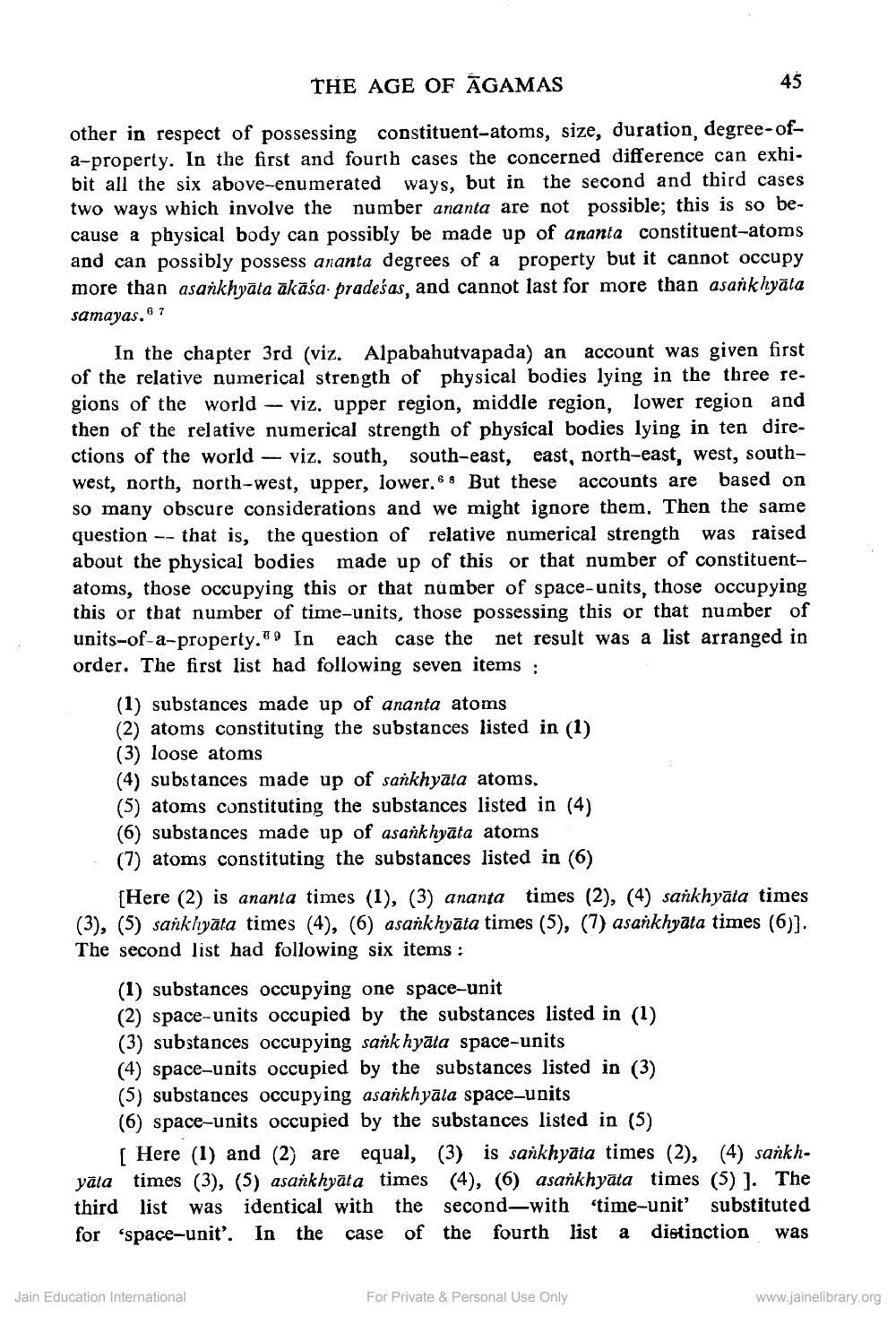________________
THE AGE OF ĀGAMAS
other in respect of possessing constituent-atoms, size, duration, degree-ofa-property. In the first and fourth cases the concerned difference can exhibit all the six above-enumerated ways, but in the second and third cases two ways which involve the number ananta are not possible; this is so because a physical body can possibly be made up of ananta constituent-atoms and can possibly possess ananta degrees of a property but it cannot occupy more than asankhyata akaśa pradeśas, and cannot last for more than asankhyata samayas. 67
In the chapter 3rd (viz. Alpabahutvapada) an account was given first
e relative numerical strength of physical bodies lying in the three regions of the world - viz, upper region, middle region, lower region and then of the relative numerical strength of physical bodies lying in ten directions of the world - viz. south, south-east, east, north-east, west, southwest, north, north-west, upper, lower. 6. But these accounts are based on so many obscure considerations and we might ignore them. Then the same question -- that is, the question of relative numerical strength was raised about the physical bodies made up of this or that number of constituentatoms, those occupying this or that number of space-units, those occupying this or that number of time-units, those possessing this or that number of units-of-a-property.9 In each case the net result was a list arranged in order. The first list had following seven items :
(1) substances made up of ananta atoms (2) atoms constituting the substances listed in (1) (3) loose atoms (4) substances made up of sankhyāta atoms. (5) atoms constituting the substances listed in (4) (6) substances made up of asankhyāta atoms (7) atoms constituting the substances listed in (6)
(Here (2) is ananta times (1), (3) ananta times (2), (4) sankhyāta times (3), (5) sankhyāta times (4), (6) asankhyāta times (5), (7) asankhyāta times (6)]. The second list had following six items:
(1) substances occupying one space-unit (2) space-units occupied by the substances listed in (1) (3) substances occupying sankhyāta space-units (4) space-units occupied by the substances listed in (3) (5) substances occupying asankhyāla space-units (6) space-units occupied by the substances listed in (5)
[ Here (1) and (2) are equal, (3) is sankhyāta times (2), (4) sankhyāla times (3), (5) asankhyāta times (4), (6) asankhyāta times (5) ). The third list was identical with the second—with "time-unit' substituted for 'space-unit'. In the case of the fourth list a distinction was
Jain Education International
For Private & Personal Use Only
www.jainelibrary.org




